Seven simple ways to prevent skin cancer after doctor shares shocking video of ‘worst melanoma’ he’s ever seen
Every day, some 9,500 Americans learn they have skin cancer – yet there are some easy steps you can take to lower your risk.
The disease affects one in five Americans in their lifetime, with melanoma being the deadliest form – though it only makes up about one percent of cases.
And now, an Australian doctor has reminded us that not all melanomas look like classic moles; some can show up as fast-growing, red bumps.
Dr. John O’Bryen – aka @skincaredoctor on TikTok – shared a case of a four millimeter thick lesion on a patient’s arm that looked like a simple red lump but, under magnification, revealed dangerous white lines and odd blood vessels.
The doctor claimed it was the ‘worst’ type of skin cancer he had ever seen.
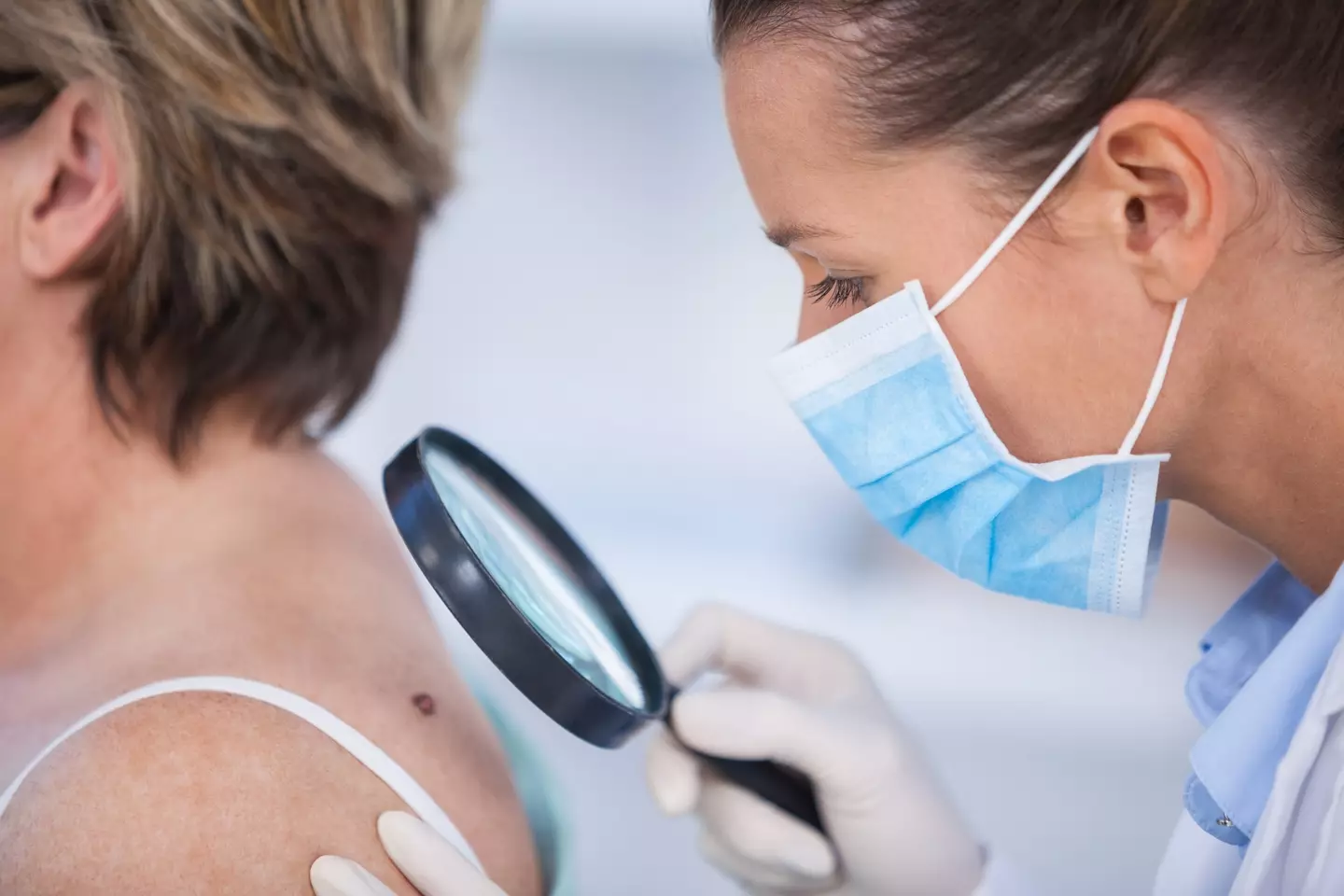
Some 5 million people in the US are diagnosed with skin cancer every year (Wavebreakmedia/Getty Images)
He diagnosed the patient as having a nodular melanoma, a dangerous type as he said they ‘grow quickly and cause the greatest fatality’.
Giving an update on the patient in the caption of his video, Dr O’Bryen wrote: “I performed an excisional biopsy of this and the patient will see a melanoma surgeon and medical oncologist.”
With skin cancer being so common, it’s even more important we do everything we can to protect our health.
From correctly applying sunscreen to self-examination, here are seven ways you can help prevent skin cancer, according to The Skin Cancer Foundation (SCF).
Avoid sunburn
Sunburn happens when too much UV light fries the top layer of your skin, making it red, swollen and sore.
Not only is in uncomfortable – and in some severe cases, a sign of sun poisoning – it also causes deeper damage to your skin.
Sunburn accelerates skin aging and is a leading cause in the majority of cases of basal cell carcinoma, squamous cell carcinoma and melanoma – the deadliest form of skin cancer, the SCF says.
Stay away from tanning beds

Tanning beds are a major no-no (ND3000/Getty Images)
The SCF says you should avoid tanning in general, and never use UV tanning beds.
If you tan – indoors or out – you’re damaging your skin and raising your cancer risk. In fact, using indoor tanning beds before age 35 boosts your melanoma risk by 75 percent, the SCF reports.
UV rays from sun or tanning beds injure skin-cell DNA. Your body makes extra melanin – the pigment that darkens skin – to shield itself, which becomes your tan. But every tan adds up.
Tanning accelerates signs aging, including wrinkles, and age spots, as well as increasing your odds of basal cell carcinoma, squamous cell carcinoma and melanoma. The only safe choice is to avoid tanning entirely.
Seek the shade
There are a number of ways to protect yourself from UV. One major way is by staying out of the sun and getting into the shade – especially between 10am and 4pm, when the sun is at its strongest.
Yes, even when it’s a cloudy day or during winter – and especially at higher altitudes.
Cover up
If you’re out in the sun, then it’s best to cover up with clothing, including a broad-brimmed hat and UV-blocking sunglasses.
The SCF warns that hats are particularly important, as the most common types of skin cancer often appear on the head and neck.
Better yet, unlike sunscreen, you don’t need to re-apply your clothes every few years. Unless your clothing gets wet – materials are less protective when drenched.
Sunscreen
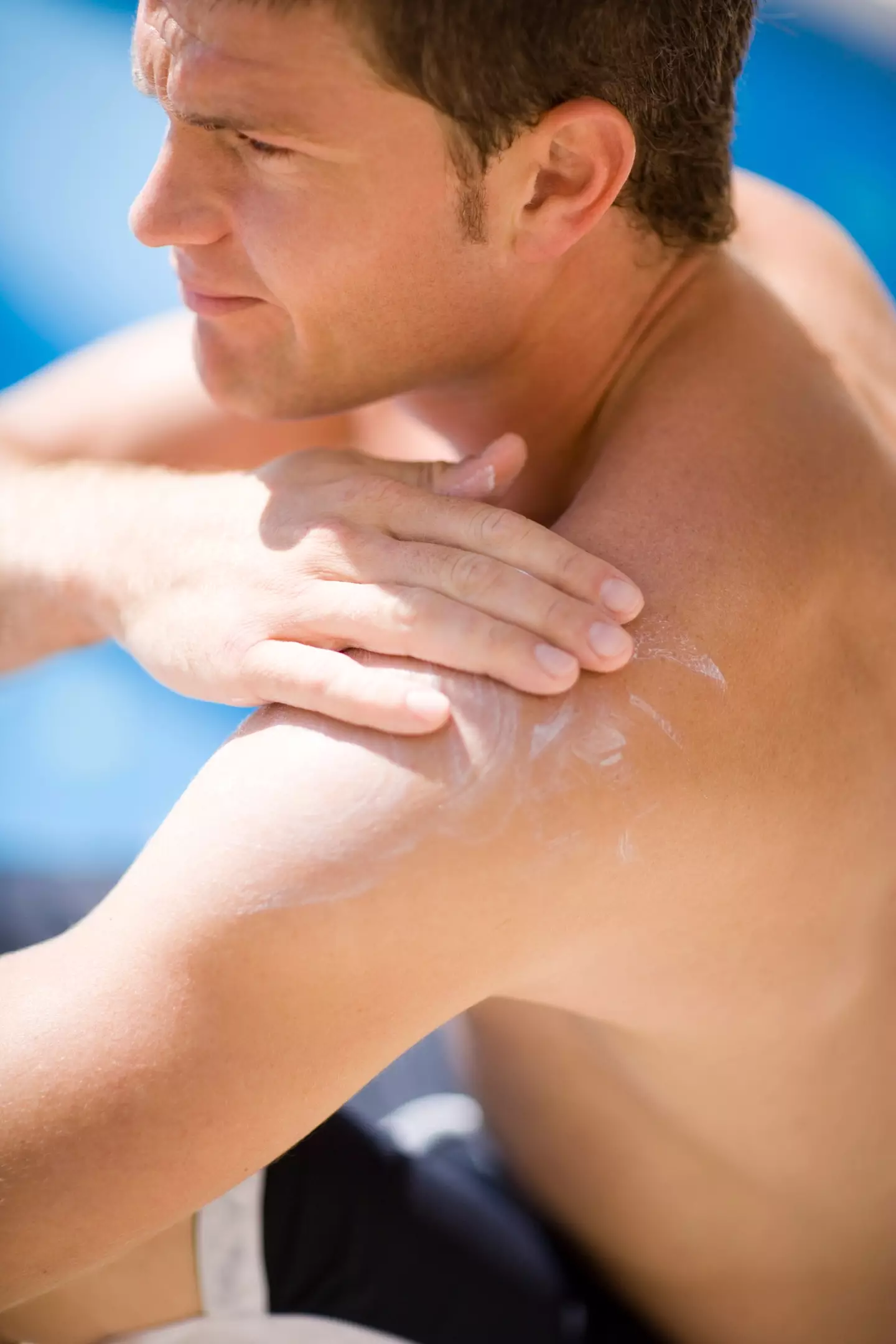
Remembering to re-apply sunscreen is vital (Ian Hooton/SPL/Getty Images)
Use a broad-spectrum (UVA/UVB) sunscreen with an SPF of 30 or higher every day. For extended outdoor activity, the SCF recommends using a water-resistant, broad-spectrum sunscreen with an SPF of 50 or higher.
Apply one ounce (two tablespoons) of sunscreen to your entire body 30 minutes before going outside. Then, reapply every two hours or after swimming or excessive sweating.
Self-examination
We should be examining our skin from head-to-toe, every single month. Remember to document anything suspicious – either jot it down or snap photos on your phone.
The SCF recommends watching out for:
- A growth that’s growing or looks pearly, transparent, tan, brown, black or multicolored
- A mole/birthmark/brown spot that’s larger than a pencil eraser, thickening or changing in color/texture (remember the ABCDEs of melanoma)
- A spot or sore that itches, hurts, crusts, scabs or bleeds
- An open sore that hasn’t healed in three weeks
See a dermatologist
If you do spot any unusual changes, then head straight to your dermatologist.
Otherwise, you should see a derm once a year for a professional skin exam anyway.
Featured Image Credit: Liliya Krueger/Getty Images
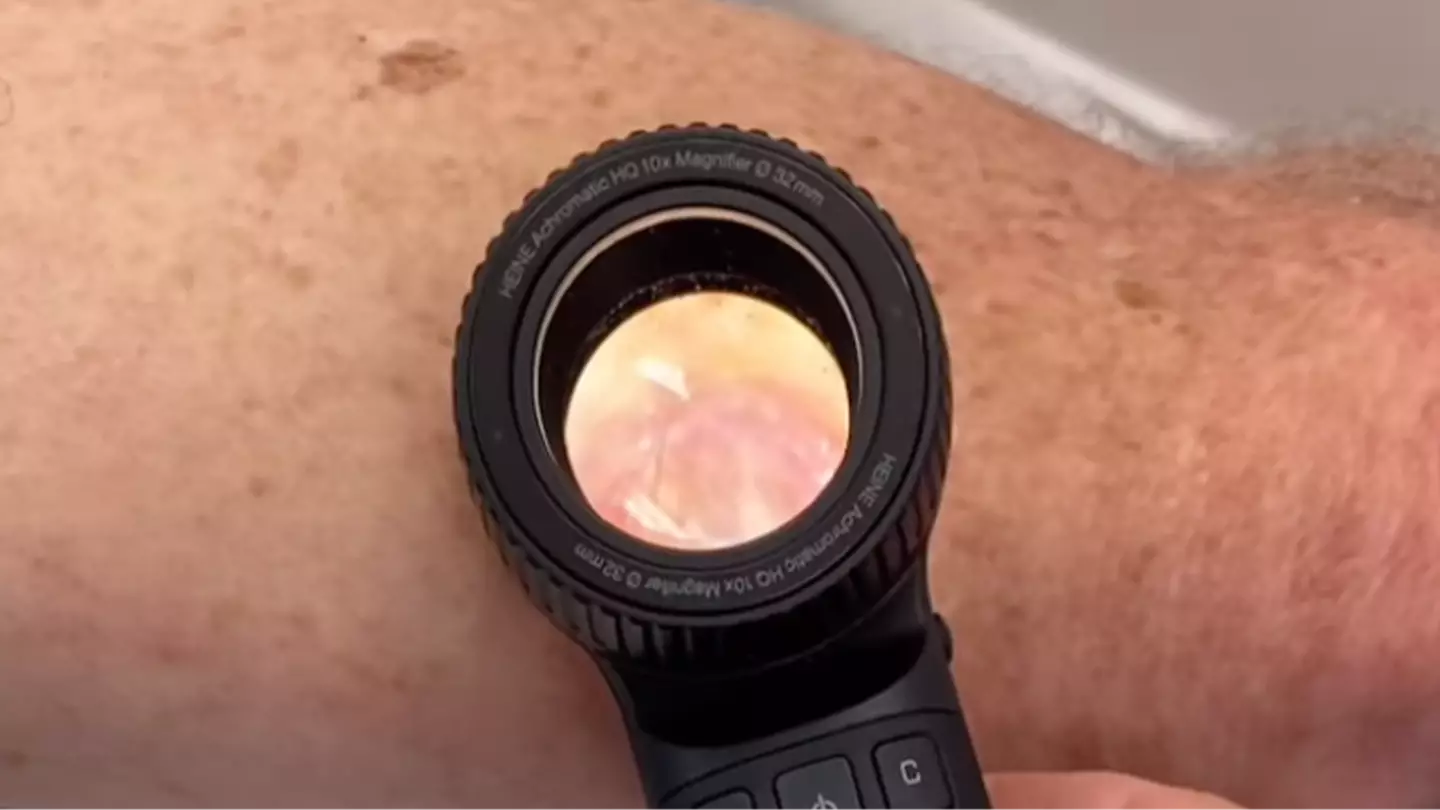
A doctor has shared a shocking video of the ‘worst’ skin cancer he’s ever diagnosed.
Skin cancer is one of the most common cancers in the US with the American Academy of Dermatology Association estimating a whopping one in five Americans develop the condition in their lifetime.
Melanoma is the deadliest form of the cancer, though makes up around one percent of all cases in the US with the vast majority determined as basal and squamous cell carcinonmas.
According to the NHS, the main symptoms include changes to the skin, moles or appearance of new moles.
Now, doctor John O’Bryen, who goes by ‘skincaredoctor’ on TikTok, has been diligently raising awareness to the disease – and how people can spot the signs, even when they aren’t so obvious.
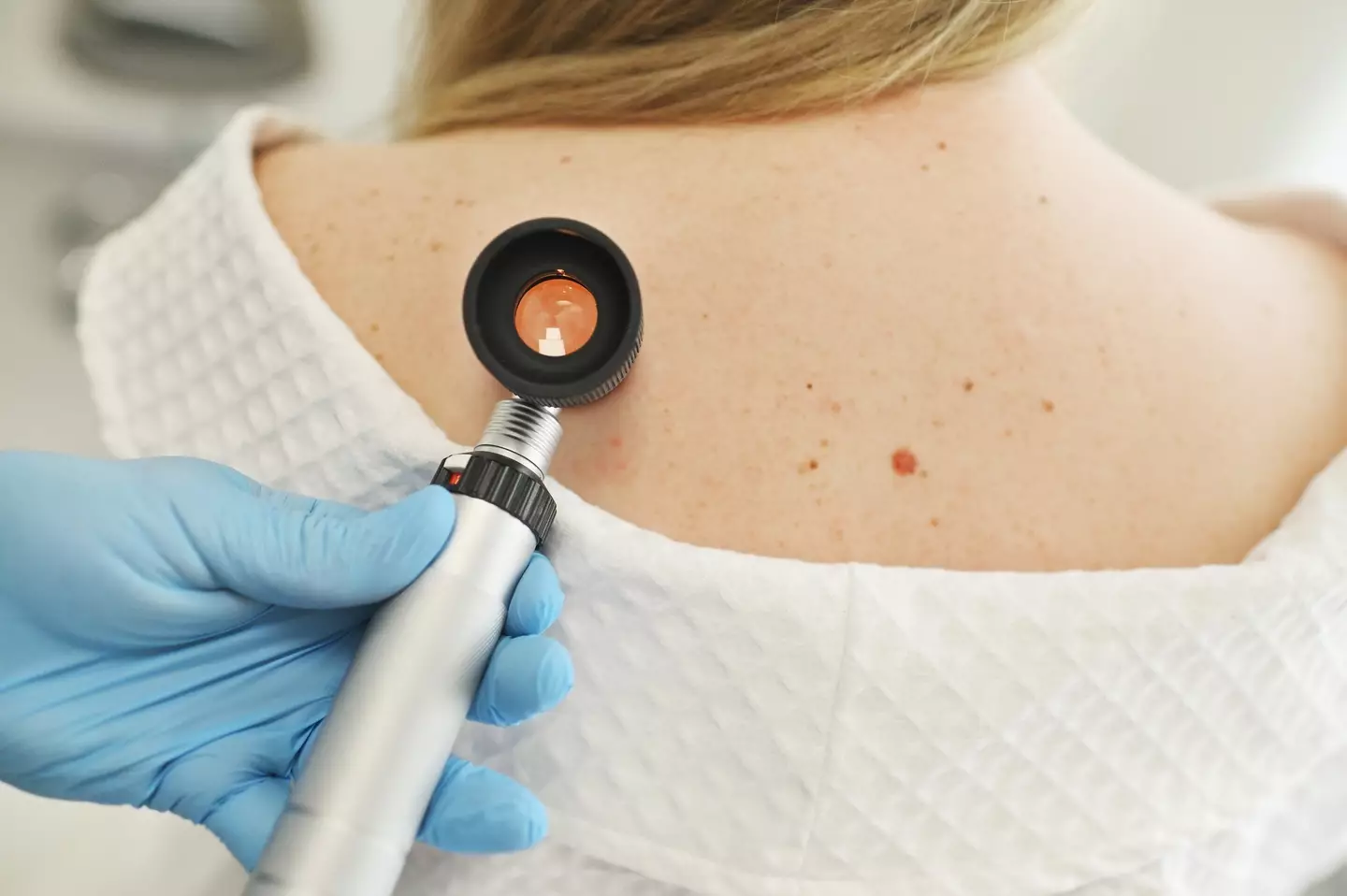
Skin cancer is one of the most common cancers in the US (Getty Images)
The specialist at Body Scan Skin Cancer Clinic in Australia has been raising awareness to the fact not all melanomas appear as freckles or moles and revealed in a shocking video the ‘worst’ type of skin cancer he has ever diagnosed.
The doc said in his video: “A man came to me last week, concerned about a new lump on his arm. It was red and had been quickly growing in size.”
Horrifyingly, O’Bryen showed a close-up video of the cancer with a ‘dermatoscope’, which revealed the spot was pink and white in color.
He said it measured 4mm on the Breslow thickness scale, which is used to measure the depth of a melanoma from the top of its granular layer to the deepest point of the tumor.
On the outside, it looked like a slightly elevated red lump, but under the microscope had ‘white polarising lines’ and ‘polymorphous vessels.’
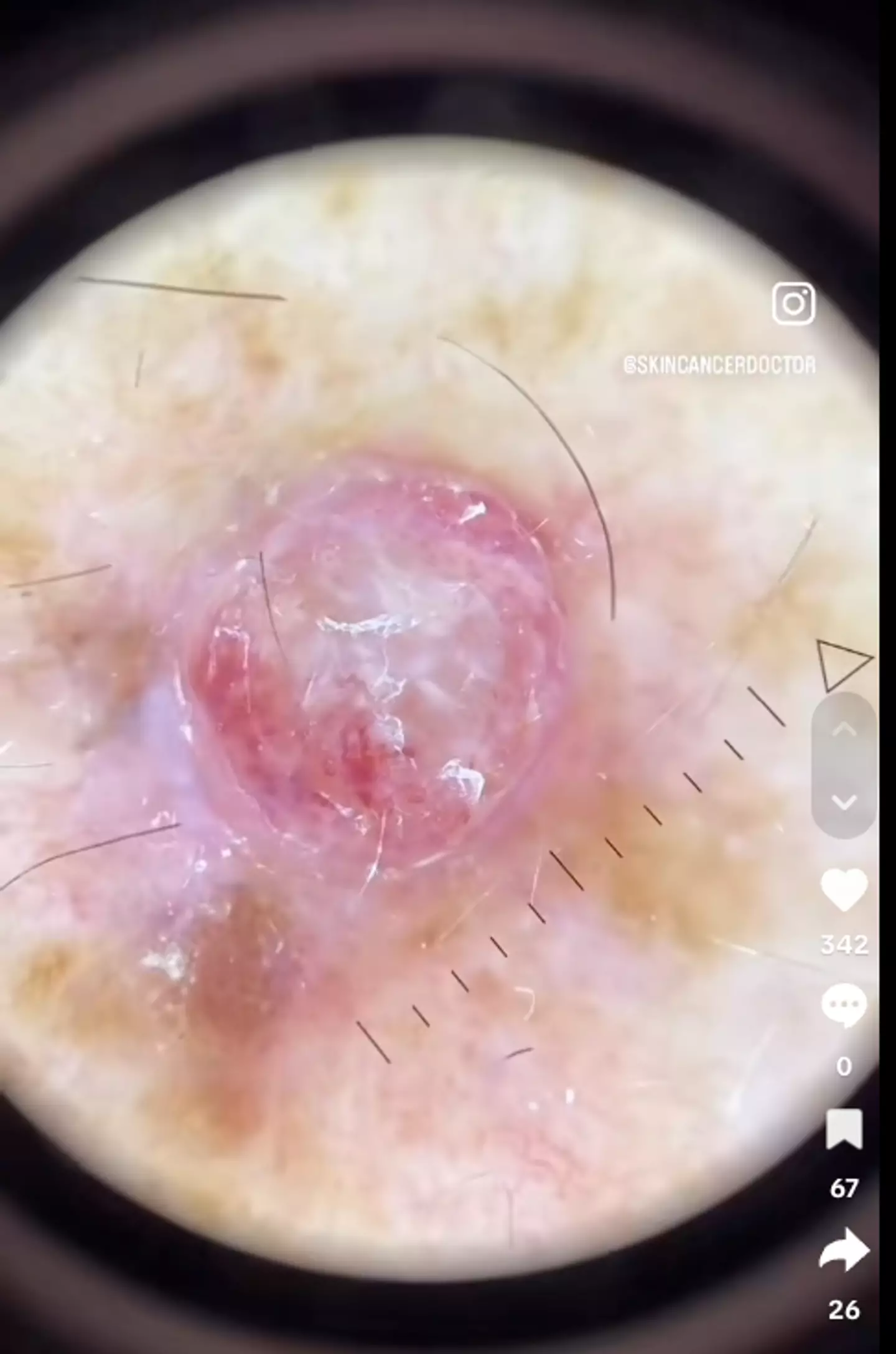
The cancer under the microscope (@skincancerdoctor/TikTok)
The doc quickly diagnosed the patient as having a nodular melanoma, a dangerous type as he said they ‘grow quickly and cause the greatest fatality’.
According to the Cleveland Clinic, nodular melanomas present as a ‘firm, raised, discolored growth’ on the skin that can appear like a blood blister and may be itchy, sting or bleed.
They can look like a dome-shaped growth and can have either smooth texture or a ‘crusty’, rough feel, which the Clinic describes as like a cauliflower.
It can also grow both above and below the skin, yet most of the cancer sits below the surface – ‘like an iceberg’.
Nodular melanoma is the second-most common type, making up about 15 to 20 percent of diagnoses.
This type of skin cancer is also behind around 50 percent of all melanoma-related deaths.
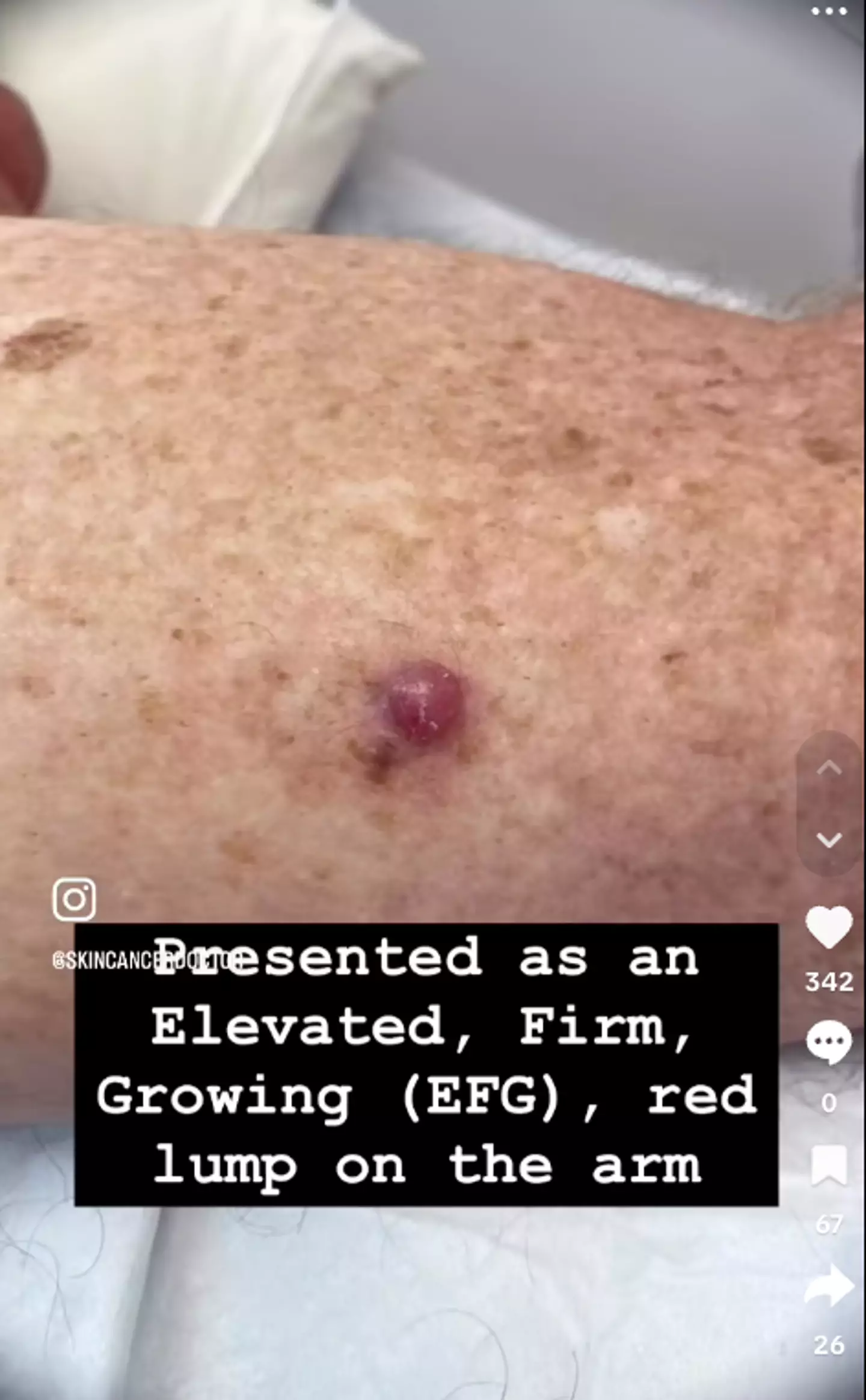
How it looked from the surface (@skincancerdoctor/TikTok)
Writing further in the caption of his viral video, he said: “Scary! Not all melanomas are brown and black!
“I performed an excisional biopsy of this and the patient will see a melanoma surgeon and medical oncologist.”
He added how his magnifying tool, the Heine Delta 30 Pro dermascope, ‘continues to assist me in diagnosing skin cancers’ and has helped him to find and treat 1,000 people last year.
Featured Image Credit: @skincancerdoctor/TikTok

A doctor is urging people to make these easy checks which can help you spot six common cancers.
It was estimated that 2024 saw over two million new cancer cases arise in the US, as per the National Cancer Institue; but not all cancer cases prove fatal.
In fact, as of 2022, there were 18.1 million cancer survivors in the United States. This number is expected to increase to 22.5 million survivors by 2032.
And one thing that will help the country achieve that number is early detection.
Cancers that are found at an earlier stage — i.e when it isn’t too large and hasn’t spread — means that it’s more likely to be treated successfully, says Cancer Research UK.
For example, nine in ten people in the UK diagnosed with stage 1 bowel cancer go on to live for five or more years after diagnosis compared to one in ten people whose bowel cancer was detected at stage 4.
Now, Dr Gareth Nye, a Lecturer and Researcher at the University of Salford, UK, has revealed some of the straightforward checks you can do in privacy of your own home — the bathroom specifically.
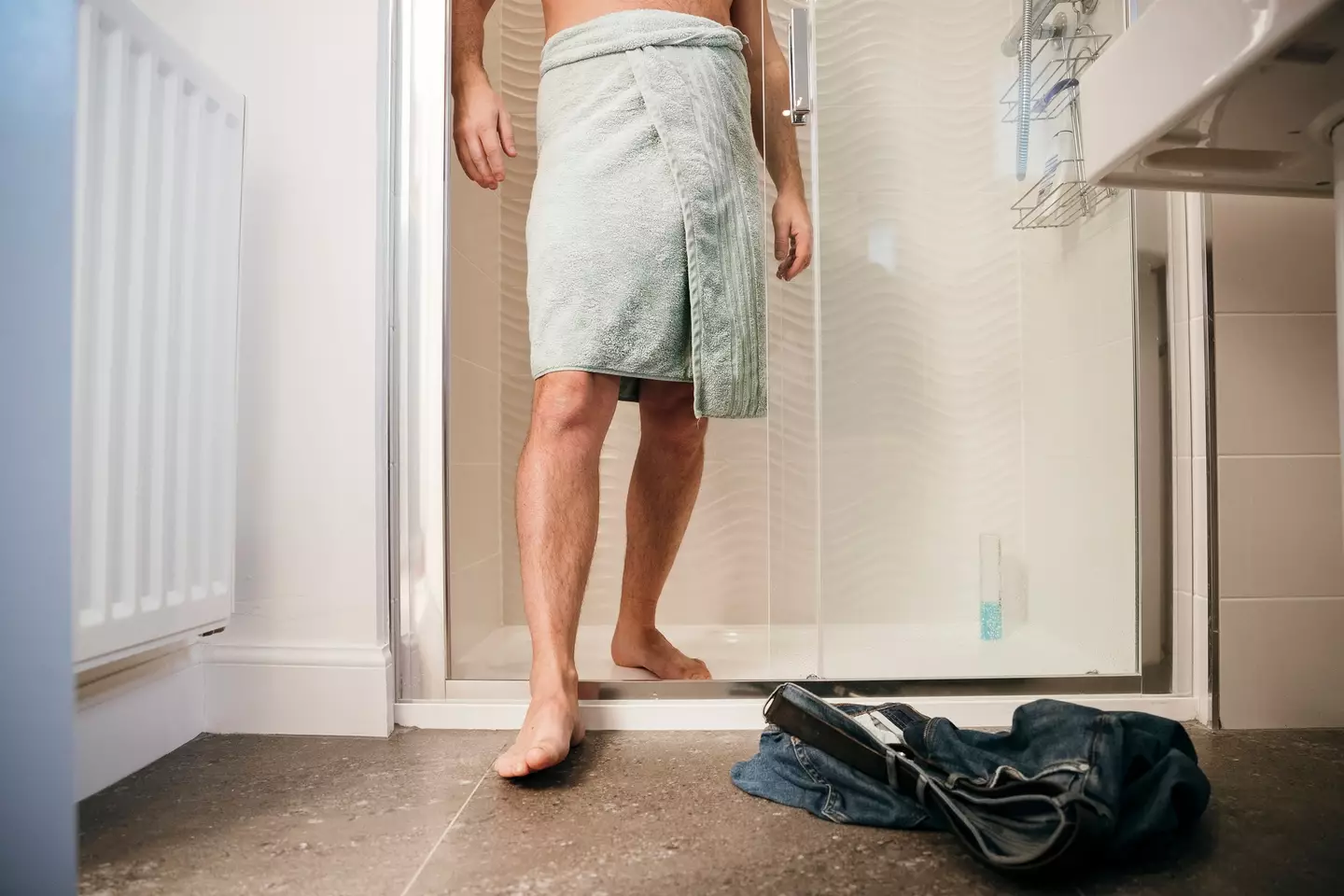
There are several ways you can monitor your health from your bathroom (Getty Stock)
Why the bathroom, I hear you ask? That’s where you’ll often find yourself in a state of undress.
“There are very few times during the day when you are fully undressed, have time and have access to warm water or scales,” Dr Nye said, as per Mirror Online.
“There is a wide range of valuable information that can be looked at whilst in the bathroom more than anywhere else.”
Here are the things that Dr Nye wants you to monitor…
Breasts and testicles
“Understanding your breasts or testicles normally is one of the easiest places to start,” he said.
“It’s key to be able to feel any new lumps or growths. Look for changes in shape, size or colouration of the breast and areola.”

Checking your breasts is one of the ‘easiest places to start’, says Dr Nye (Getty Stock)
Skin
Dr Nye explained: “Skin changes or moles are another very common issue which can be monitored easily. You should be aware of the moles on your body and be looking for any changes in terms of shape, size and colour.”
“Any new mole, moles which have irregular edges, or are not symmetrical, should be assessed by a healthcare professional,” he added.
Prostate, bowel and bladder
Understanding your bowel and bladder in particular could be ‘key to early [cancer] detection’, says Dr Nye.
“Being aware of how frequently you are going to the toilet is important as well as noting the amount, colour, and consistency of the product,” he went on.
Frequent urination is a symptom of prostate cancer, while blood in your pee or stool could be a sign of bladder or bowel cancer.
Bleeding
A woman’s menstrual cycle can be a huge help in spotting signs of any changes to the body.
“Bleeding out of your monthly cycle or particularly heavy bleeding may suggest underlying issues,” warned Dr Nye.
Featured Image Credit: Getty Images/Superb Images
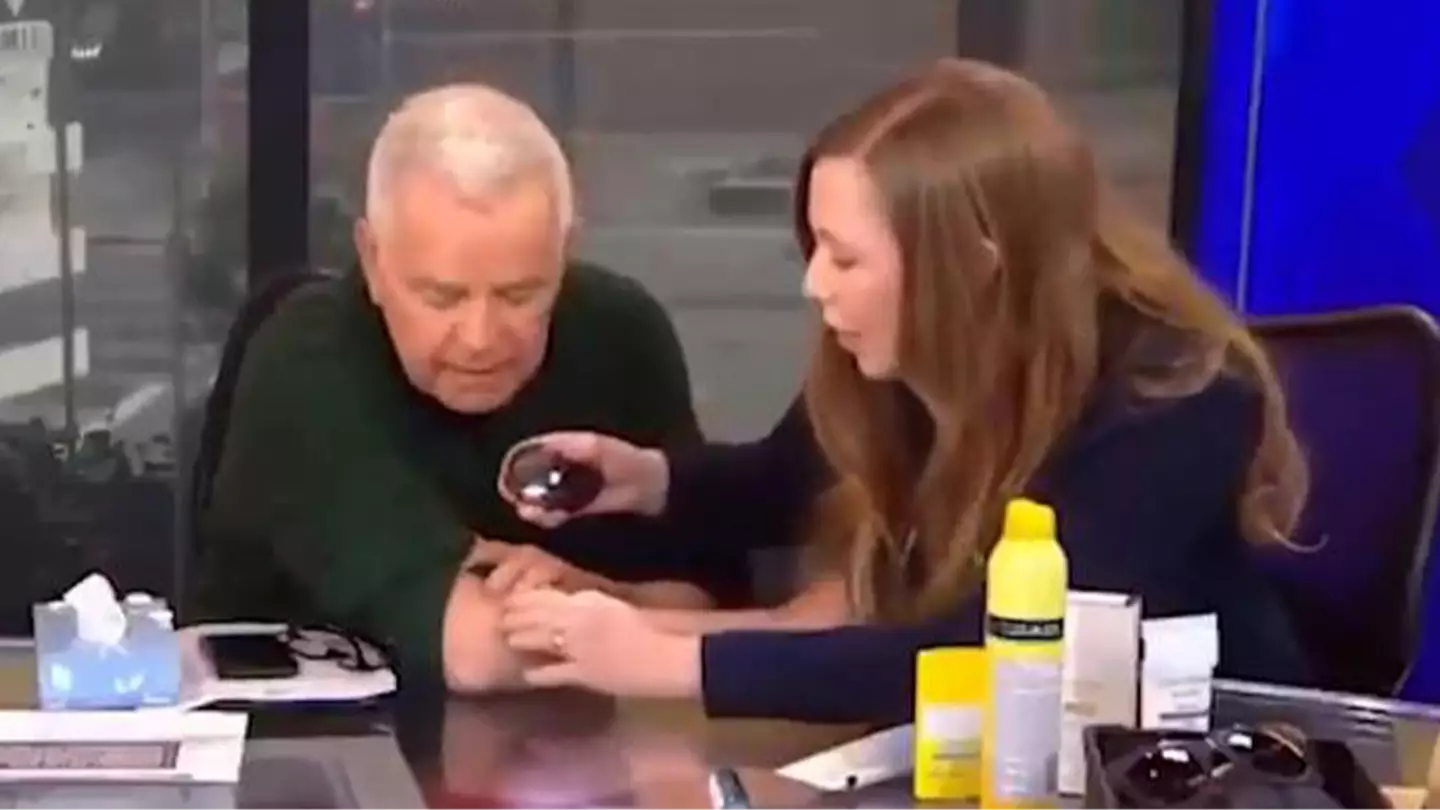
A TV host was left stunned when he was told he had skin cancer by a dermatologist live on-air.
Mike Jerrick, co-host of Good Day Philadelphia on Fox News, received the devastating news he had skin cancer when a dermatologist came on the show and spotted a concerning cancerous-looking spot on his elbow – and ‘blurted it out’ unexpectedly.
Eagle-eyed doctor Joanna Walker, who works at the Tara Miller Melanoma Center at the University of Pennsylvania, told Jerrick that the spot has ‘all the features of the most common type of skin cancer.’
Skin cancer stands as the most common cancer in the United States with one in five likely to develop the condition by the age of 70.
Around two people die of the cancer in the US every hour, however, the Skin Cancer Foundation states the survival rate for melanoma is 99 percent when detected early.
“So this is a basal cell skin cancer,” Dr Walker said while looking closely at his arm, to which a shocked Jerrick asked: “It is?”
However, fortunately it appears he has a ‘slow growing’ type that is ‘very treatable.’
She told Jerrick he could have the spot removed to which the bewildered host replied: “What are you gonna do? Burn it off?”
“This one probably needs to be cut and stitched,” she said.
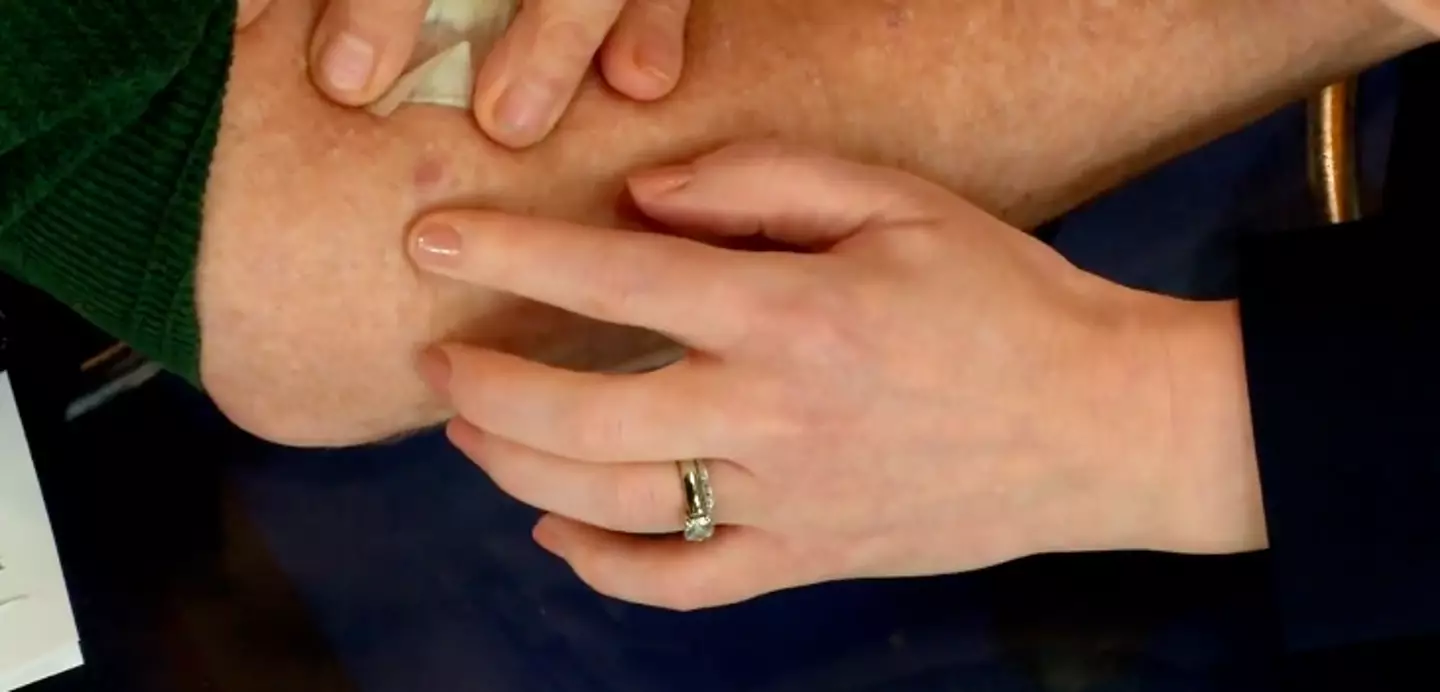
The doctor pointed out the melanoma on his arm (Fox29)
“What!” Jerrick said stunned. “And then stitch me up?”
Explaining further, Dr Walker said: “So this one is a very slow growing type of skin cancer, it’s not gonna spread to anywhere else on your body.
“But it needs to be removed so it doesn’t keep growing and taking over normal skin.”
“Oh, good lord,” Jerrick responded before revealing to Fox News viewers that the diagnosis, especially live on air, was a complete shock.
“I did say that we should have had her bring her [micro]scope because I wanted to check out of couple of things on my arms, so that part was planned,” he said. “But I never really thought it was going to be skin cancer.”

The host was shocked by the revelation (Fox29)
Co-host Alex Holley then asked the doc what Jerrick should do next and if he should book for an appointment to which Dr Walker said he should.
“When she blurted it out, I didn’t get alarmed or anything,” Jerrick said. “It was just like, “Oh dang, I should have done this a long time ago’.”
“I should be fine,. She’ll just suture me up and I’ll be on my way.”
The outlet has since confirmed Jerrick has an appointment to have the spot removed on Friday.
According to the Mayo Clinic, basal cell carcinoma can appear as a skin-colored or pink bump on white skin, or brown or glossy black on brown and black skin, and occurs in places that are most exposed to the sun like the head and neck.
Avoiding the sun, tanning beds and using sunscreen can help to prevent this type of skin cancer.
Featured Image Credit: Fox29

John Cena has called on everyone to do checks for cancer as he opens up about his own journey and the treatment he received.
Cancer is often considered a scary or dirty word as the disease can prove to be unpredictable. However, wrestler John Cena has called on everyone to do checks for their own benefit and health.
Speaking to PEOPLE, Cena spoke about his own skin cancer diagnosis and the fear that set in when he received the news.
A trip to the dermatologist revealed ‘a cancerous spot’ on his ‘right pec’ but thankfully the spot was able to be removed.
Cena had to have another spot removed around a year later and he admits it’s not always easy stopping his mind going to ‘the worst-case scenario’.
Cena is now promoting the use of sunscreen with Neutrogena but beyond that has implored everyone to check for cancerous lumps and moles.
The American Cancer society has said that doing a skin self-exam once a month is recommended and said this is particularly important in those who are at higher risk of skin cancer.

Cena has recently opened up his fears when he was diagnosed with skin cancer
Those that are normally considered high risk include people with reduced immunity, people who have had skin cancer before, people who have lots of moles or other skin spots, and people with a strong family history of skin cancer.
The website also outlined how to do the checks simply while at home.
To do the checks, you should be in a well-lit room, have a full length mirror as well as a smaller mirror in order to effectively check for signs of cancer.
The society said when checking you must: “Check your face, ears, neck, chest, and belly. Women will need to lift their breasts to check the skin underneath.
“Check your underarm areas, both sides of your arms, the tops and palms of your hands, in between your fingers, and under your fingernails.”
When sitting down you should then: “Check the front of your thighs, shins, tops of your feet, in between your toes, and under your toenails.

The American cancer society has said you should regularly do self checks either alone or with a family member or partner
“Now use a hand mirror to look at the bottoms of your feet, your calves, and the backs of your thighs, first checking one leg and then the other.
“Use the hand mirror to check your buttocks, genital area, lower and upper back, and the back of your neck and ears. Or it may be easier to look at your back in the wall mirror using a hand mirror.
“Use a comb or hair dryer to part your hair so that you can check your scalp.”
The cancer society also outlined what you should be keeping an eye out for.
These signs include a new, expanding, or changing growth, spot, or bump on the skin, a sore that bleeds and/or doesn’t heal after several weeks, a rough or scaly red patch, which might crust or bleed.
They also warned of wart-like growths, a mole (or other spot on the skin) that’s new or changing in size, shape, or color, a mole with an odd shape, irregular borders, or areas of different colors.





